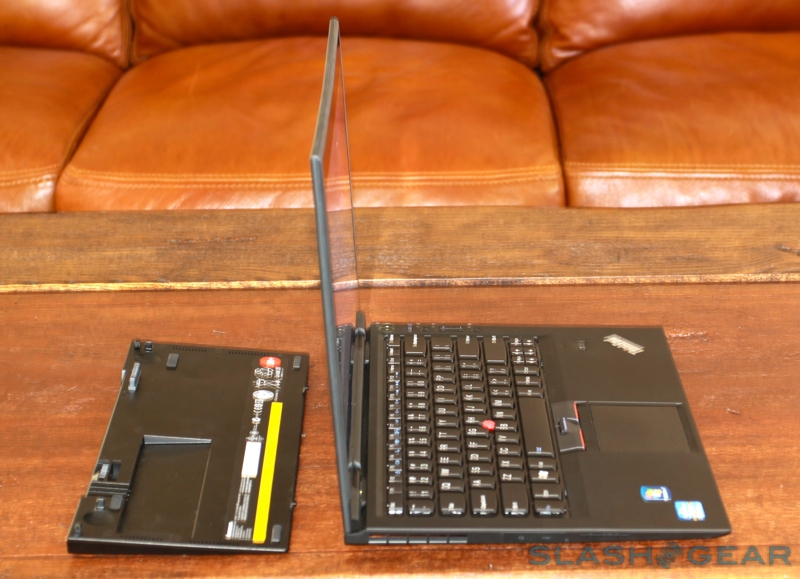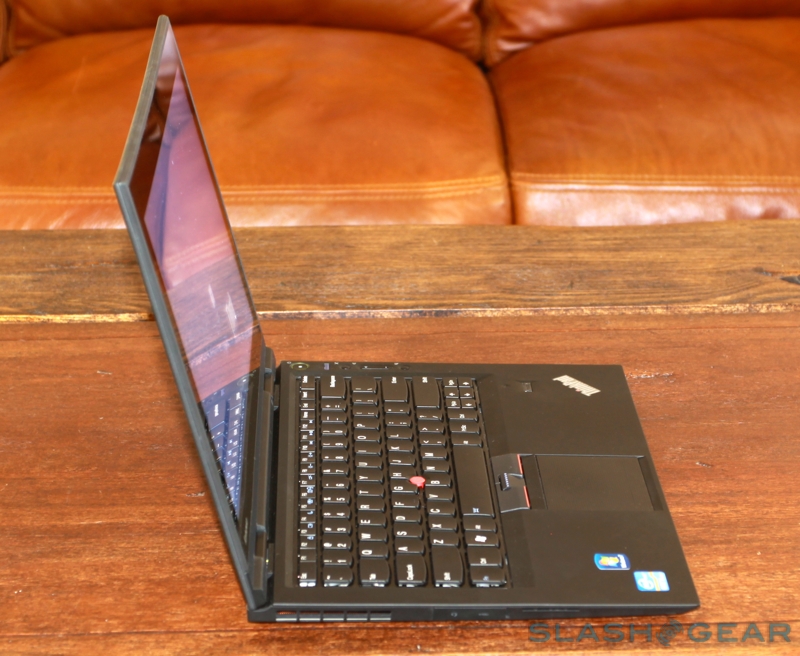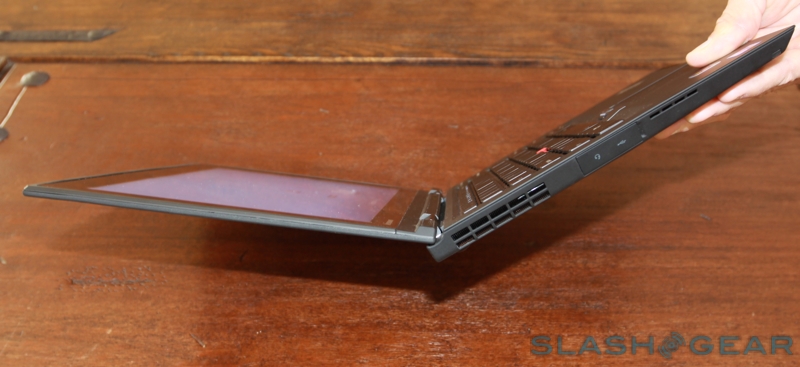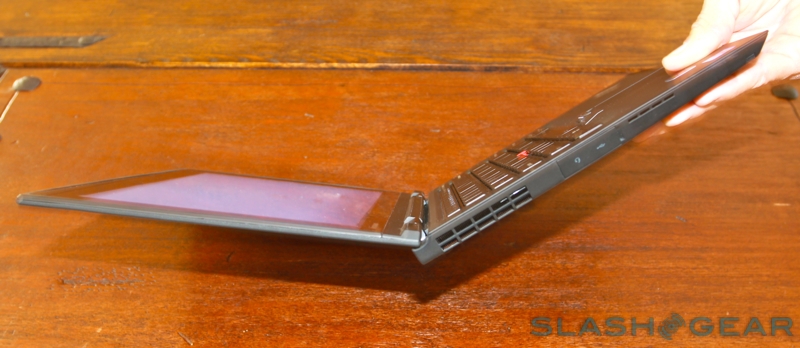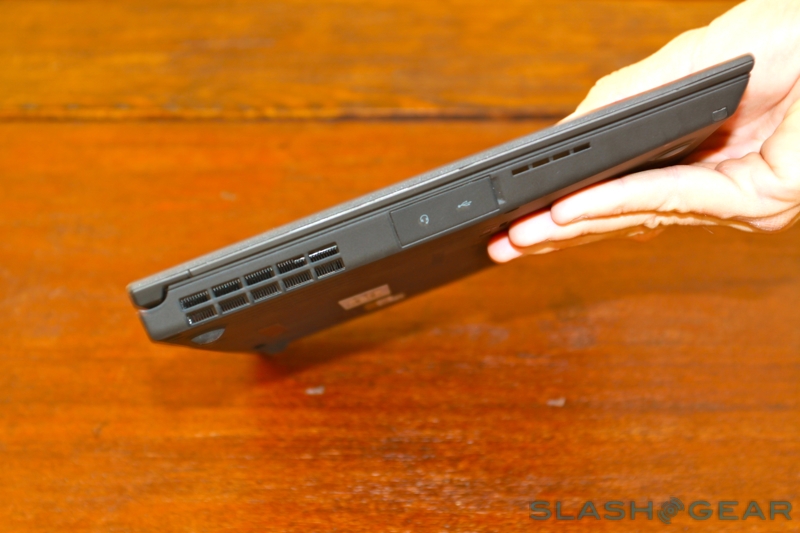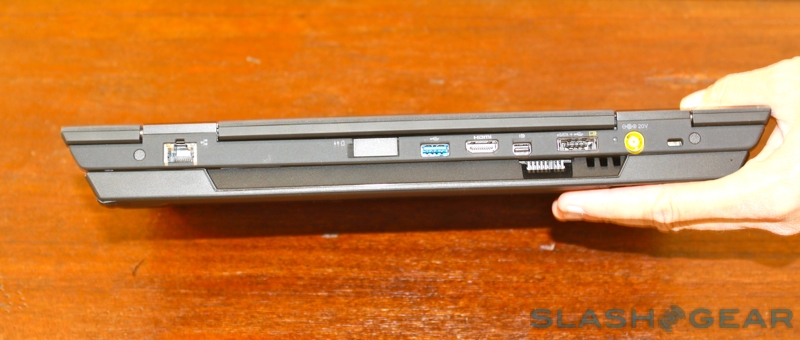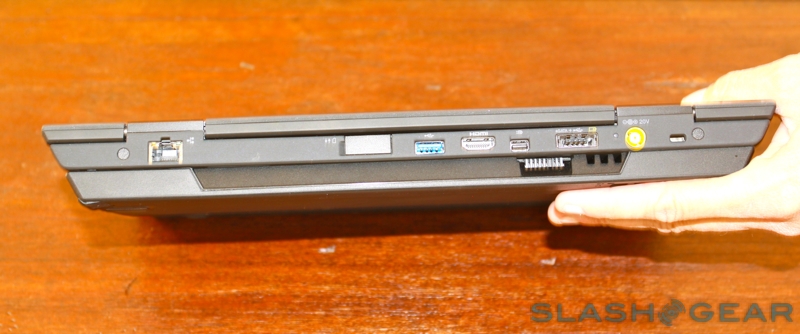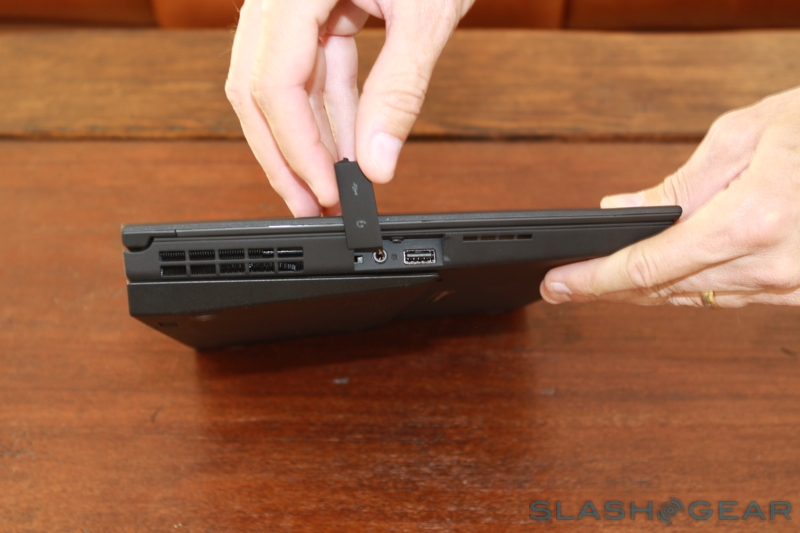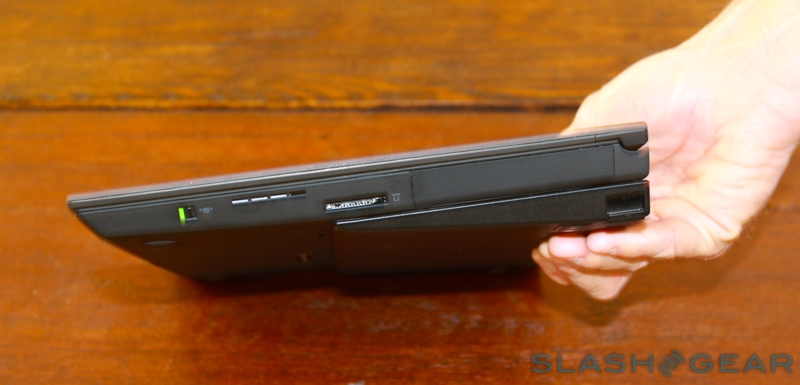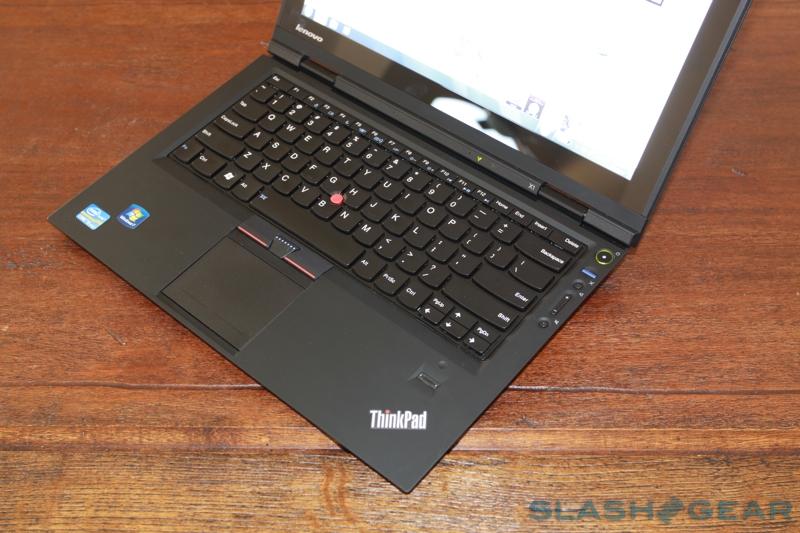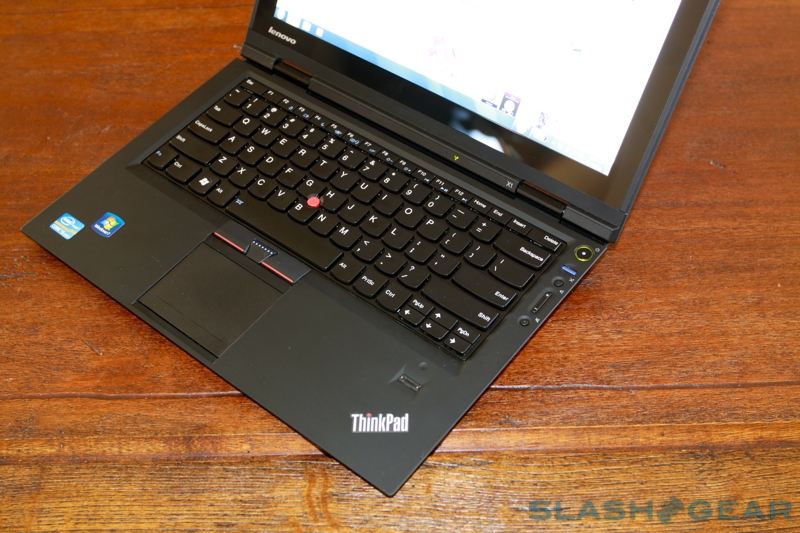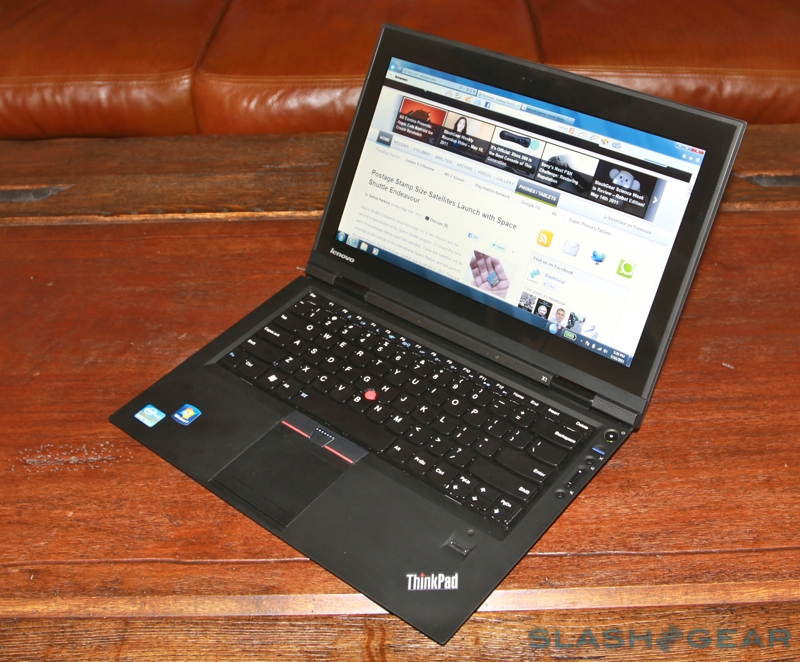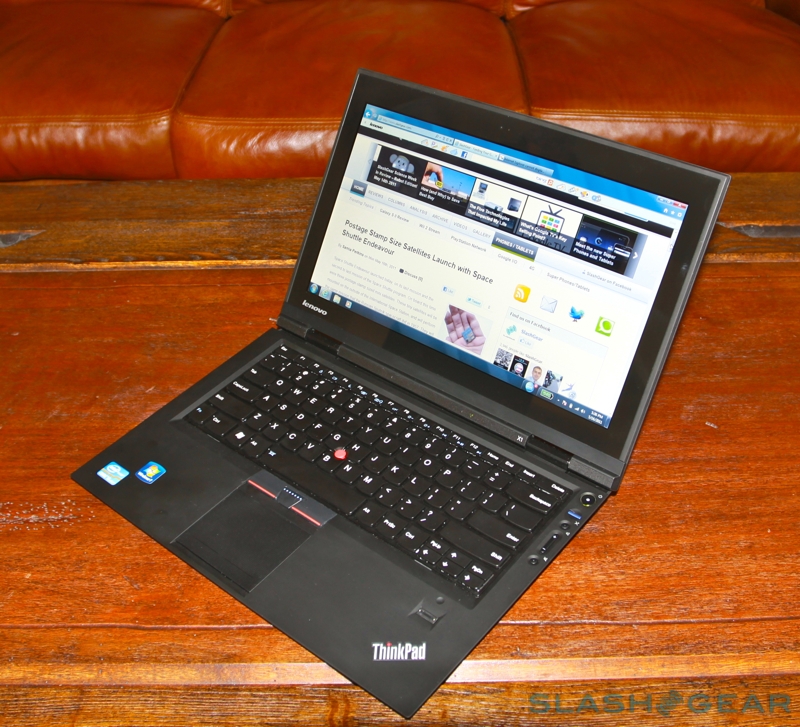Lenovo ThinkPad X1 Review
We got the new Lenovo ThinkPad X1 in our hands early, to get the skinny on this laptop targeted for the business user. This slim black laptop looks good on the outside, but like Mom used to say "It's what's inside that counts." With rumors of Intel Core i7 processors and solid state drives, we were looking forward to checking things out. Here's a sneak peak: could the X1 really signal the return of the Turbo Boost Button? It's released tomorrow, so check out the full SlashGear review to see what the ThinkPad X1 is really made of.
Hardware
The X1 has a wedge design theme to it that gives it a cutting edge look. Matte black all over, inside and out, the only thing glossy is the Corning Gorilla Glass 13.3 inch HD display (1366 x 766). The design accents on the X1 are minimal. There are chrome Lenovo logos located in the lower left corner when the lid is closed, and in the lower left corner of the screen inside the bezel. The ThinkPad logo is in the lower right corner when the lid is shut, and also on the lower right of the main body below the fingerprint reader. And of course, the usual stickers for Intel Inside, Windows 7, and Energy Star are on there as well. The overall design has a no-nonsense feel. Almost like it should say "Designed exclusively for Darth Vader."
Weighing only 3.73 lbs it is pretty light. The only thing we didn't like about the appearance was the finish on the top of the lid. It can only be seen when the light hits it the right way, but there is a slight shimmer built into the finish on the lid only. It looks like micro-fine red, green, and blue glitter were embedded in the plastic. It is a little bit like black granite counter tops or maybe stone. It doesn't look bad, it just seems like it doesn't quite fit. Probably more personal taste issue than a major drawback.
The Gorilla Glass LCD display was a winner. Great colors and crisp text. Even outside it was still useable. The X1 has real bad glare outside, but not as bad as a tablet or other device with the same glass, and the screen didn't get as washed out either. The only drawback to the screen isn't actually the screen at all, It was the integrated low-light sensitive HD webcam. Overall the camera was disappointing. Snapshots were grainy and adjusting the user settings didn't improve image quality that much. A decent webcam, but did not meet the SlashGear standard for HD. The best performance from the webcam was in low-light conditions. If there was a bright light or a bright window in the background then the whole image got streaky or very bad glare. The bright green led indicator was one of the good points, so at least you knew when you were on camera.
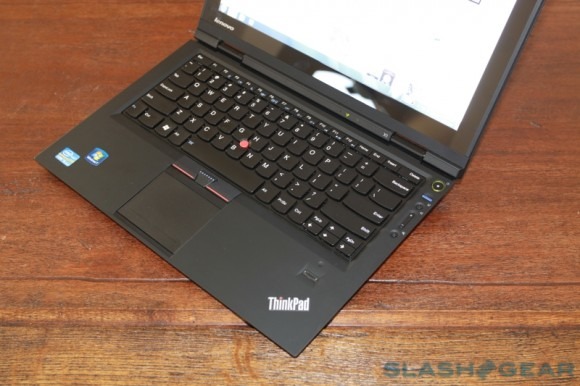
The metal hinges between the top and the chassis were another plus. Even though we didn't do a four point drop test, the internal Roll Cage was built to meet Mil Spec 8 and withstand drops from 1.6 meters while maintaining system operation and without loss of data. (That's 1.1 meters above industry testing standard of 0.5 meters). The dual keyboard drain holes are another design plus. They are located just below the Control key and left arrow key to help save the system from a renegade Frappuccino. (But they will not prevent residual sticky keys).
The X1 in the SlashGear test was running Windows 7 Professional 32-bit, (with 64-bit also available). The processor was a Sandy Bridge Intel dual-core i5 at 2.50 GHz and 1333 MHz FSB. (Available up to 2.70 GHz Intel i7). There was 4 GB of DDR3 1333MHz RAM in one DIMM slot, so not a lot of expansion room, (up to 8 GB RAM from factory). Although Solid State Drives up to 160 GB are available, the SlashGear test model had a 320 GB Hitachi 7200 RPM SATA II drive with 16 MB buffer. The hard drive has built in Bulk Data Encryption (BDE) for customizing who has access to what data. The BDE combined with the fingerprint reader make an extremely secure and relatively pain-free way to encrypt sensitive data in case Big Brother, or The Boss, is watching (The job Boss, not Springsteen).
The ThinkPad X1 also claims its Enhanced Experienced 2.0 will boot on average 20 seconds faster than other Windows 7 PCs. The SlashGear stopwatch recorded the X1 boot time at 37 or 38 seconds. That is fast for most Windows users: 38 seconds from being completely off, to the Windows desktop. Not the Windows login screen, the desktop. Yes that was without a login password, but we just wanted to see how fast the X1 could do it. From being asleep, the X1 almost instantly woke up. Wake up was under 5 seconds every time.
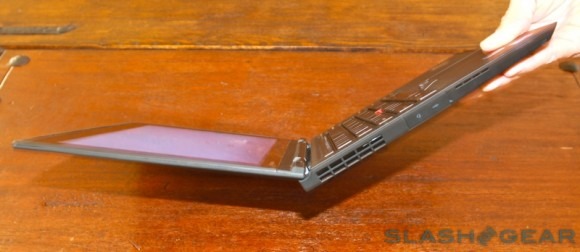
There are plenty of ports on the X1 for most business applications. But when it comes to I/O ports, enough is never enough. Along the back are a Mini DisplayPort, HDMI 1.4a, ethernet, a single USB 3.0, a powered combo eSATA and USB 2.0 port, and the A/C power cord port. On the right side is the multi card reader (SD, MMC, SDHC, and SDXC), and on the left side is the mic/headphone jack and one more USB 2.0. There is only one cooling vent located on the left side at the back, but it seems to cool just fine. The stereo speakers are built in the right and left side and have excellent sound. It's not going to replace a stereo, but great for filling a room with music or being on a conference call. It comes with Dolby Home Theater v4. There is also built-in Bluetooth 3.0 (optional), WiFi of course, and also a WiMax option. There is also a Trackpoint and touchpad mouse control below the keyboard; both worked very well.
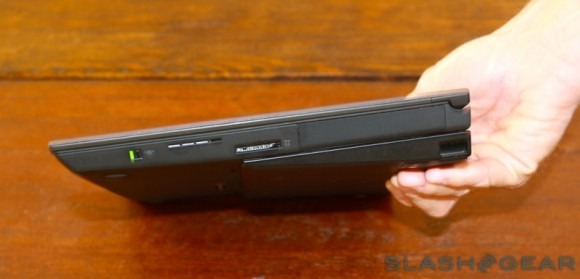
The X1 ships with two batteries from the factory, the internal chassis battery and an external Slice battery that could be described as a long, thin door-stop. The Slice battery snaps on the bottom back edge and actually improves the angle of the keyboard. The batteries will be discussed in more detail under Performance because of some of the integrated Turbo Boost features. The keyboard is backlit with low, med, and off settings. Backlight control is done using Function + Spacebar. The X1 is not going to beat Alienware in a contest for lighting effects, but backlight is a cool feature that would be useful in a car or a dark room, like during a slideshow. The full size keyboard was easy to use with good feel and button resistance without too much noise. The only complaint about the keyboard is the location of the Control and Function keys. The Function key is in the lower most left corner, with the Control key just one to the right, also on the bottom row. We are used to the Control key being in the corner instead. Not a deal breaker, it just took some getting used to.
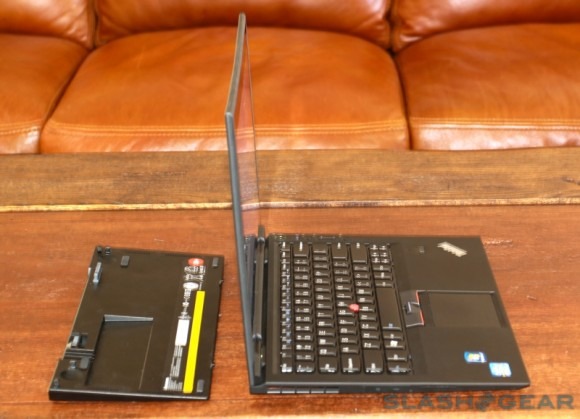
There are some new function keys to the right of the keyboard just below the power button. There is a small blue ThinkVantage button that brings up shortcuts to a number of things. Some of them are quite useful like Security and Networking and Backup and Diagnostics, while others are just clever Lenovo marketing in disguise. Below that are some VoIP controls, volume control and clearly labeled mute buttons. It is nice to know when someone can hear you talking or not. The interface for VoIP and video calling has some new features built into it. The microphone can be set on My Voice to narrow the angle and reduce background noise, or, it can be set to Multiple Voices to open up the mic to 360-degrees for a conference call.
What is missing from the X1? There's no optical drive, (no CD, no DVD, no Blu-ray). Probably not a deal breaker for most business laptops. Most files are emailed or put on shared drives. For home use, this would probably be a large negative. Consumers still burn lots of CDs and DVDs. However, much of that is being replaced by MP3 players and the like.
Performance
Does anyone remember the Turbo Boost button on the old Pentium 90 chassis? (Anyone under 30 probably doesn't). Well, it might be making a comeback, sort of. The battle between battery life and performance has left many casualties along the way. An interesting solution has been designed into the X1. A Power Manager is one of the new icons built into the new Taskbar. The Power Manager has a very intuitive interface that allows the user to quickly see the battery status and how much time remains of battery function. It also lets you shift the power balance between high performance and battery savings using a sliding scale. In the Power Manager a setting called Battery Stretch can also be activated to add another 20 or 30 minutes. At the bottom of the Power Manager window is a Turbo Boost box you can click. When the Turbo Boost is activated, the almost silent cooling fan revs up noticeably and the heat output increases. Based on these system settings the battery life can be decreased or increased dramatically.
Lenovo advertises up to 10 hours of usage with both batteries. However, we found a more realistic estimate was somewhere between 3.5 to 7 hours, varying greatly depending on use. Running a bunch of system intensive benchmarks can knock off 2 or 3 hours of battery life in a few minutes. So, if you are planning on doing lots of intense 3D rendering while riding the bus, better plan on recharging when you get to the office. Lenovo claims 80-percent charge in 30 minutes, but that is only on one battery, and a full charge for both batteries can take an hour or two longer.
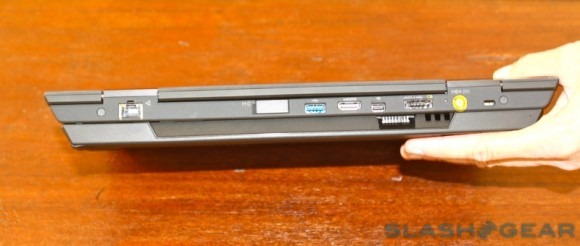
The benchmarks tell the real story. On Geekbench 2.1 the ThinkPad X1 scored 5192 for processor and memory performance (higher is better). Not a speed demon, but a solid mid-level score. The X1 should be capable of tackling most applications on the market smoothly. Without the Turbo Boost the score drops to 5153, so only a little more performance is squeezed out with the boost. With the Power Manager set all the way down to the Max power savings for lowest performance the benchmark score drops down to 1524. (At that speed, the system will probably crash running Solitaire; we joke, but not by much). The dual-core, four thread processor naturally performed best in multi-thread scalar benchmarks. Compared to quad-core processors it performed about half as well, also no big surprise.
Now the scores for graphics processing using Cinebench 11.5. Cinebench measures the performance of the GPU using OpenGL and the threading performance of the CPU. The CPU scored 2.57 points; turning off the Turbo Boost made no difference. The Intel HD 3.0.0 GPU scored 8.51 fps in the OpenGL testing. Not the machine of choice for a 3D animation studio, but should be able to handle most current PC games and business applications. All those benchmarks and performance scores should go up with some of the higher end options like quad-core i7 processor and Solid State Drive. But, the price probably will as well. However, add an i7 processor and a SSD and increase the RAM up to 8 GB, and the X1 will be a much faster machine.
Pricing and Value
The ThinkPad X1 was originally announced to start around $1,399 available tomorrow. Price will vary based on the different options purchased, but at first glance seems a little high. Still, it is sometimes hard to compare apples to apples when it comes to laptops. The average non-business consumer would probably get a much prettier Dell or something similar. The small business owner will have to decide if they want a sturdy work horse, or a pretty show pony. The X1 is the work horse. It gets the job done, and doesn't worry about competing in the pretty show.
Since the X1 is targeted at the Business User, this laptop is probably a pretty good fit. In some ways the X1 has the compact size and portability like a netbook, with the performance of a laptop. No optical drive, but decent performance and built for multitasking and conference calling. (Even if the video call isn't in broadcast quality HD.) It doesn't have some of the fluff that a business user won't need, and is built more sturdy than the average PC. The higher end X1 options like SSD and quad core i7 will increase the price but also greatly increase performance.
Wrap Up
Like many laptops, the X1 is greatly limited in terms of expandability beyond the initial options at the time of purchase. But is seems like Lenovo is attempting to build a laptop that will be useful and sturdy enough to work for years to come. The prime negative is the absence of an optical drive, only of concern for those who burn lots of CDs and DVDs; that may not even be a factor in the new digital world that is rapidly growing around us. Anyone that is looking for the most extreme system on the razors edge of performance, this is not it. If you're looking for five bright colors to choose from, look elsewhere.
If you want a solid system with high level data security, and a simple user interface, then this might be for you. If you need to easily make conference calls, and need a light, portable device that can take a little abuse, then the X1 may be a good choice. If you are waiting for the true Turbo Boost button from 1995 to make a comeback, keep waiting.

